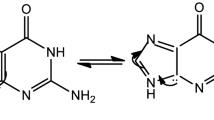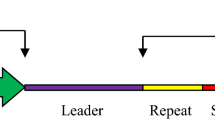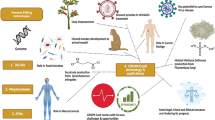Abstract
Chromium(VI) (Cr(VI)) can suppress both DNA replication and transcription as a result of chromium (Cr)-induced DNA damage. While progress has been made in the characterization of Cr-induced DNA polymerase arresting lesions, very little information is available on the inhibition of transcription by this metal. The aim of the present study was to identify the molecular mechanisms involved in the reduction of RNA synthesis by Cr. Following treatment with a moderately cytotoxic dose (~ LC50) of Cr(VI) (150 μM for 2 h), total RNA synthesis was initially suppressed in CHO cells and recovered to control levels within 72 h post-treatment. In vitro nuclear run-on transcription assays of nuclei isolated from Cr(VI)-treated cells showed a similar amount of RNA synthesis suppression as observed in intact cells. Qualitative analysis of nascent transcripts revealed a general, concentration-dependent reduction in size suggesting that transcriptional elongation was inhibited following Cr-treatment. Transcriptional initiation in these nuclei was also reduced. To better determine whether transcriptional suppression was related to Cr-induced DNA damage we examined the transcriptional activity of T7 RNA polymerase on Cr(III)-treated plasmid DNA. Treatment of pGEM3Z-TS DNA with Cr(III) resulted in transcriptional arrest which occurred primarily at GC-rich and palindromic regions. However, in contrast to the cellular data, transcriptional initiation was unaffected in the in vitro transcription arrest assays. Taken together, these results suggest that the suppression of RNA synthesis by Cr is related to chromium-induced template DNA damage which prevents elongation leading to premature RNA polymerase arrest.
Similar content being viewed by others
References
IARC: Monograph on the Evaluation of Carcinogenic Risk to Humans. Chromium, Nickel and Welding. Lyon, France, 1990
De Flora S: Threshold mechanisms and site specificity in chromium(VI) carcinogenesis. Carcinogenesis 21: 533–541, 2000
Singh J, Carlisle DL, Pritchard DE, Patierno SR: Chromium-induced genotoxicity and apoptosis: Relationship to chromium carcinogenesis (review). Oncol Rep 5: 1307–1318, 1998
Buttner B, Beyersmann D: Modification of the erythrocyte anion carrier by chromate. Xenobiotica 15: 735–741, 1985
Standeven AM, Wetterhahn KE: Chromium(VI) toxicity: uptake, reduction and DNA damage. J Am Cell Toxicol 8: 1275–1283, 1989
Stearns DM, Courtney KD, Giangrande PH, Phieffer LS, Wetterhahn KE: Chromium(VI) reduction by ascorbate: Role of reactive intermediates in DNA damage in vitro. Environ Health Perspect 102(suppl 3): 21–25, 1994
Stearns DM, Wetterhahn KE: Reaction of chromium(VI) with ascorbate produces chromium(V), chromium(IV), and carbon-based radicals. Chem Res Toxicol 7: 219–230, 1994
Sugden KD, Stearns DM: The role of chromium(V) in the mechanism of chromate-induced oxidative DNA damage and cancer. J Environ Pathol Toxicol Oncol 19: 215–230, 2000
Fornace AJ Jr, Seres DS, Lechner JF, Harris CC: DNA-protein cross-linking by chromium salts. Chem Biol Interact 36: 345–354, 1981
Bridgewater LC, Manning FC, Woo ES, Patierno SR: DNA polymerase arrest by adducted trivalent chromium. Mol Carcinogen 9: 122–133, 1994
Bridgewater LC, Manning FC, Patierno SR: Base-specific arrest of in vitro DNA replication by carcinogenic chromium: relationship to DNA interstrand crosslinking. Carcinogenesis 15: 2421–2427, 1994
Hamilton JW, Wetterhahn KE: Chromium (VI)-induced DNA damage in chick embryo liver and blood cells in vivo. Carcinogenesis 7: 2085–2088, 1986
Tsapakos MJ, Wetterhahn KE: The interaction of chromium with nucleic acids. Chem Biol Interact 46: 265–277, 1983
Okada S, Ohba H, Taniyama M: Alterations in ribonucleic acid synthesis by chromium (III). J Inorg Biochem 15: 223–231, 1981
Alcedo JA, Misra M, Hamilton JW, Wetterhahn KE: The genotoxic carcinogen chromium(VI) alters the metal-inducible expression but not the basal expression of the metallothionein gene in vivo. Carcinogenesis 15: 1089–1092, 1994
Manning FC, Xu J, Patierno SR: Transcriptional inhibition by carcinogenic chromate: Relationship to DNA damage. Mol Carcinog 6: 270–279, 1992
Manning FC, Blankenship LJ, Wise JP, Xu J, Bridgewater LC, Patierno SR: Induction of internucleosomal DNA fragmentation by carcinogenic chromate: Relationship to DNA damage, genotoxicity, and inhibition of macromolecular synthesis. Environ Health Perspect 102(suppl 3): 159–167, 1994
Hamilton JW, Wetterhahn KE: Differential effects of chromium(VI) on constitutive and inducible gene expression in chick embryo liver in vivo and correlation with chromium(VI)-induced DNA damage. Mol Carcinog 2: 274–286, 1989
O'Brien T, Mandel HG, Pritchard DE, Patierno SR: Critical role of chromium (Cr)-DNA interactions in the formation of Cr-induced polymerase arresting lesions. Biochemistry 41: 12529–12537, 2002
Bridgewater LC, Manning FC, Patierno SR: Arrest of replication by mammalian DNA polymerases alpha and beta caused by chromium-DNA lesions. Mol Carcinogen 23: 201–206, 1998
Xu, J, Manning FC, Patierno SR: Preferential formation and repair of chromium-induced DNA adducts and DNA — protein crosslinks in nuclear matrix DNA. Carcinogenesis 15: 1443–1450, 1994
O'Brien T, Xu J Patierno SR: Effects of glutathione on chromium-induced DNA crosslinking and DNA polymerase arrest. Mol Cell Biochem 222: 173–182, 2001
Ljungman M, Zhang F: Blockage of RNA polymerase as a possible trigger for u.v. light-induced apoptosis. Oncogene 13: 823–831, 1996
Ljungman M, Zhang F, Chen F, Rainbow AJ, McKay BC: Inhibition of RNA polymerase II as a trigger for the p53 response. Oncogene 18: 583–592, 1999
Ljungman M, Paulsen MT: The cyclin-dependent kinase inhibitor roscovitine inhibits RNA synthesis and triggers nuclear accumulation of p53 that is unmodified at Ser15 and Lys382. Mol Pharmacol 60: 785–789, 2001
Tornaletti S, Donahue BA, Reines D, Hanawalt PC: Nucleotide sequence context effect of a cyclobutane pyrimidine dimer upon RNA polymerase II transcription. J Biol Chem 272: 31719–31724, 1997
Tornaletti S, Maeda LS, Lloyd DR, Reines D, Hanawalt PC: Effect of thymine glycol on transcription elongation by T7 RNA polymerase and mammalian RNA polymerase II. J Biol Chem 276: 45367–45371, 2001
Chen YH, Matsumoto Y, Shibutani S, Bogenhagen DF: Acetylaminofluorene and aminofluorene adducts inhibit in vitro transcription of a Xenopus 5S RNA gene only when located on the coding strand. Proc Natl Acad Sci USA 88: 9583–9587, 1991
Chen YH, Bogenhagen DF: Effects of DNA lesions on transcription elongation by T7 RNA polymerase. J Biol Chem 268: 5849–5855, 1993
Selby CP, Sancar A: Transcription preferentially inhibits nucleotide excision repair of the template DNA strand in vitro. J Biol Chem 265: 21330–21336, 1990
Wang S, Shi X: Mechanisms of Cr(VI)-induced p53 activation: The role of phosphorylation, mdm2 and ERK. Carcinogenesis 22: 757–762, 2001
Carlisle DL, Pritchard DE, Singh J, Owens BM, Blankenship LJ, Orenstein JM, Patierno SR: Apoptosis and P53 induction in human lung fibroblasts exposed to chromium (VI): Effect of ascorbate and tocopherol. Toxicol Sci 55: 60–68, 2000
Ha L, Ceryak S, Patierno SR: Chromium(VI) activates Ataxia telangiectasia mutated (ATM) protein. Requirement of ATM for both apoptosis and recovery from terminal growth arrest. J Biol Chem 278: 17885–17894, 2003
Pritchard DE, Singh J, Carlisle DL, Patierno SR: Cyclosporin A inhibits chromium(VI)-induced apoptosis and mitochondrial cytochrome c release and restores clonogenic survival in CHO cells. Carcinogenesis 21: 2027–2033, 2000
Blankenship, LJ, Manning FC, Orenstein JM, Patierno SR: Apoptosis is the mode of cell death caused by carcinogenic chromium. Toxicol Appl Pharmacol 126: 75–83, 1994
Blankenship LJ, Carlisle DL, Wise JP, Orenstein JM, Dye LE, Patierno SR: Induction of apoptotic cell death by particulate lead chromate: Differential effects of vitamins C and E on genotoxicity and survival. Toxicol Appl Pharmacol 146: 270–280, 1997
Flaspohler JA, Milcarek C: Myelomas and lymphomas expressing the Ig gamma 2a H chain gene have similar transcription termination regions. J Immunol 144: 2802–2810, 1990
Labarca C, Paigen K: A simple, rapid, and sensitive DNA assay procedure. Anal Biochem 102: 344–352, 1980
Xu J, Bubley GJ, Detrick B, Blankenship LJ, Patierno SR: Chromium(VI) treatment of normal human lung cells results in guanine-specific DNA polymerase arrest, DNA-DNA cross-links and S-phase blockade of cell cycle. Carcinogenesis 17: 1511–1517, 1996
Standeven AM, Wetterhahn KE: Ascorbate is the principal reductant of chromium(VI) in rat liver and kidney ultrafiltrates. Carcinogenesis 12: 1733–1737, 1991
Standeven AM, Wetterhahn KE: Ascorbate is the principal reductant of chromium(VI) in rat lung ultrafiltrates and cytosols, and mediates chromium-DNA binding in vitro. Carcinogenesis 13: 1319–1324, 1992
Okada S, Taniyama M, Ohba H: Mode of enhancement in ribonucleic acid synthesis directed by chromium(III)-bound deoxyribonucleic acid. J Inorg Biochem 17: 41–49, 1982
Ohba H, Suketa Y, Okada S: Enhancement of in vitro ribonucleic acid synthesis on chromium(III)-bound chromatin. J Inorg Biochem 27: 179–189, 1986
Wetterhahn KE, Hamilton JW: Molecular basis of hexavalent chromium carcinogenicity: Effect on gene expression. Sci Total Environ 86: 113–129, 1989
Carlisle DL, Pritchard DE, Singh J, Patierno SR: Chromium(VI) induces p53-dependent apoptosis in diploid human lung and mouse dermal fibroblasts. Mol Carcinog 28: 111–118, 2000
Shumilla JA, Wetterhahn KE, Barchowsky A: Inhibition of NF-kappa B binding to DNA by chromium, cadmium, mercury, zinc, and arsenite in vitro: Evidence of a thiol mechanism. Arch Biochem Biophys 349: 356–362, 1998
Wang JF, Engelsberg BN, Johnson SW, Witmer C, Merrick WC, Rozmiarek H, Billings PC: DNA binding activity of the mammalian translation elongation complex: Recognition of chromium-and transplatin-damaged DNA. Arch Toxicol 71: 450–454, 1997
Author information
Authors and Affiliations
Rights and permissions
About this article
Cite this article
Xu, J., Manning, F.C., O'Brien, T.J. et al. Mechanisms of chromium-induced suppression of RNA synthesis in cellular and cell-free systems: Relationship to RNA polymerase arrest. Mol Cell Biochem 255, 151–160 (2004). https://doi.org/10.1023/B:MCBI.0000007271.53241.ae
Issue Date:
DOI: https://doi.org/10.1023/B:MCBI.0000007271.53241.ae




